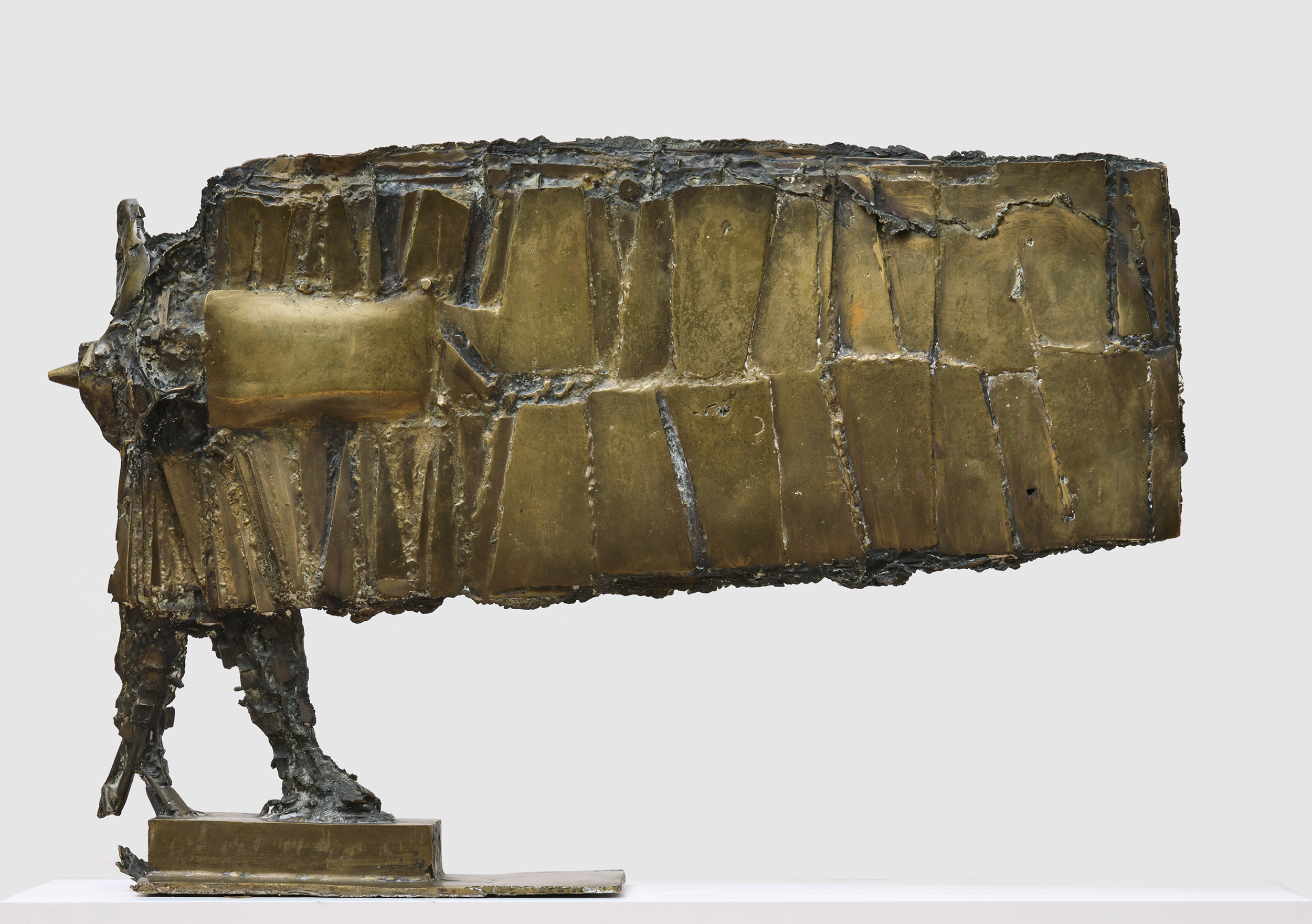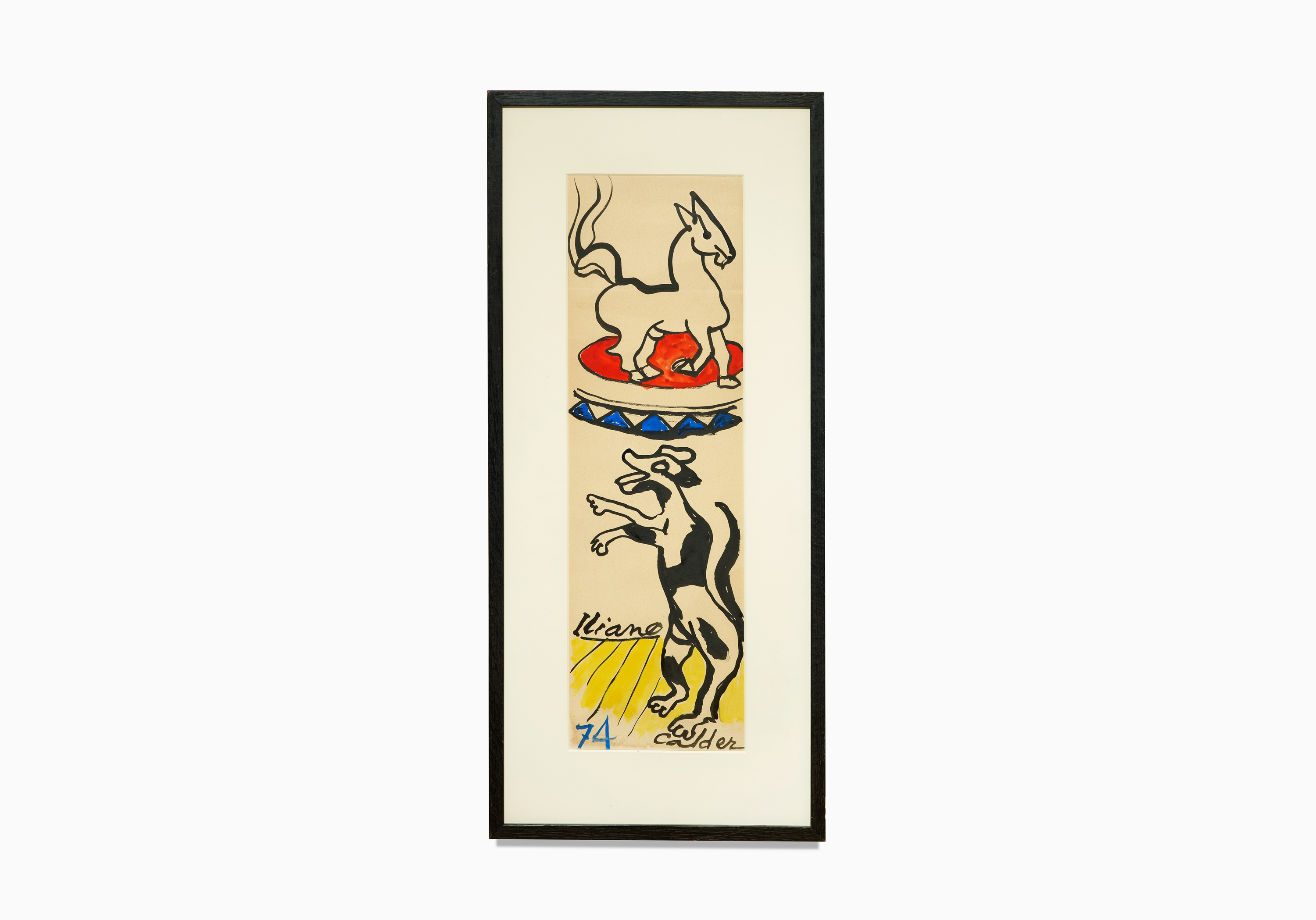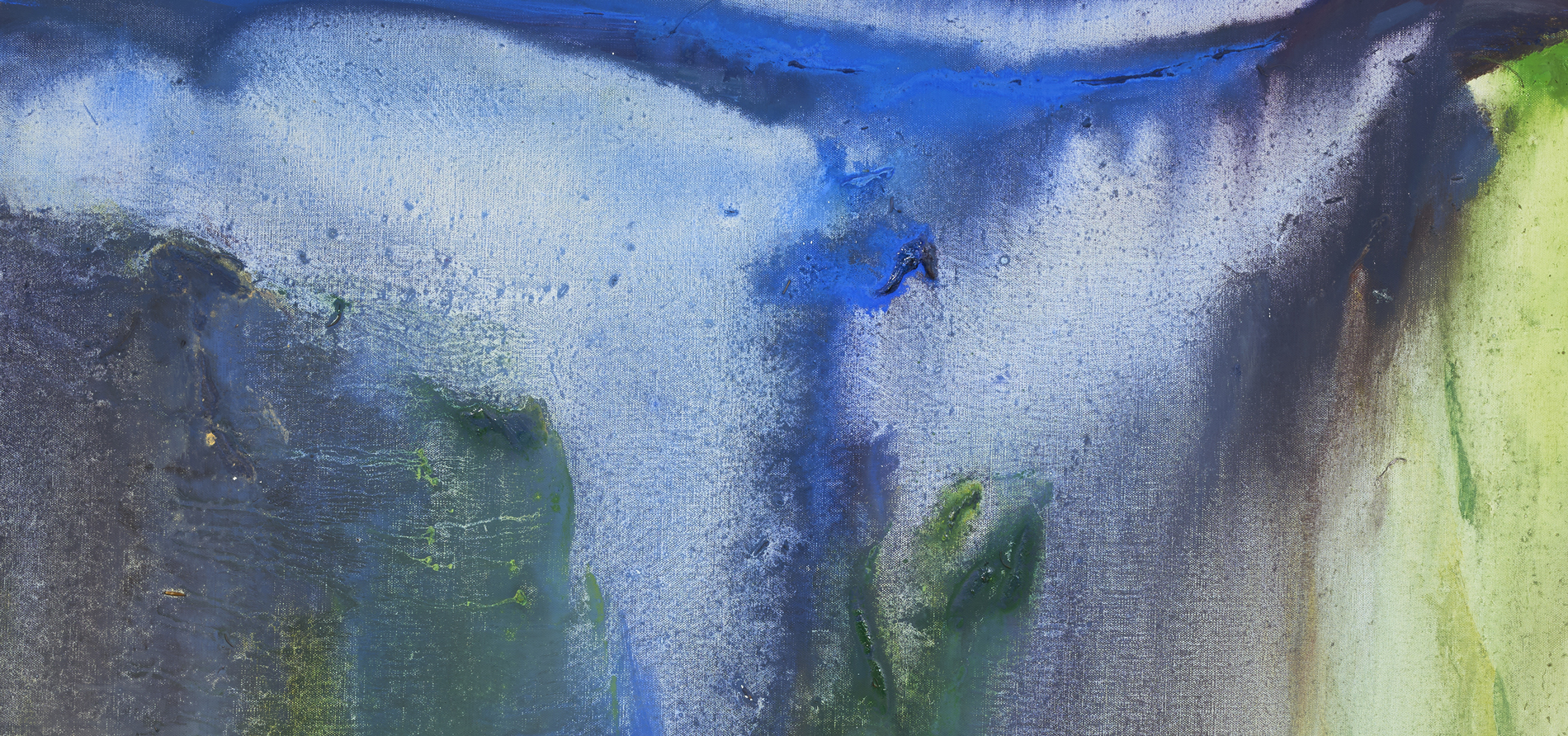Group Show
June 20 - July 20 2024On the occasion of the Olympic Games, A&R Fleury gallery is pleased to share with you a set of post-war and contemporary works. Through ten artists, the project allows for the exploration of the numerous artistic languages developed throughout the second half of the 20th century, from abstract and figurative forms to more conceptual means of expression.
Artworks
César
Homme de Draguignan, 1964-68
Gilded bronze
65,5 x 101 x 22,5 cm


Joan Miró, Sans titre
1er octobre 1972

Alexander Calder, Circus
1974
Artists
- Karel Appel
- Victor Brauner
- Alberto Burri
- Alexander Calder
- Lynn Chadwick
- Geneviève Claisse
- Claudine Drai
- Jean Dubuffet
- Jorge Eduardo Eielson
- Sam Francis
- Simon Hantaï
- Hans Hartung
- Le Corbusier
- Fernand Léger
- Mao Lizi
- Georges Mathieu
- Alicia Penalba
- Serge Poliakoff
- Judit Reigl
- Jean-Paul Riopelle
- Gérard Schneider
- Pierre Soulages
- Geer van Velde
- Victor Vasarely
- Bernar Venet
- Claude Viallat
- Maria Helena Vieira da Silva
- Ossip Zadkine


